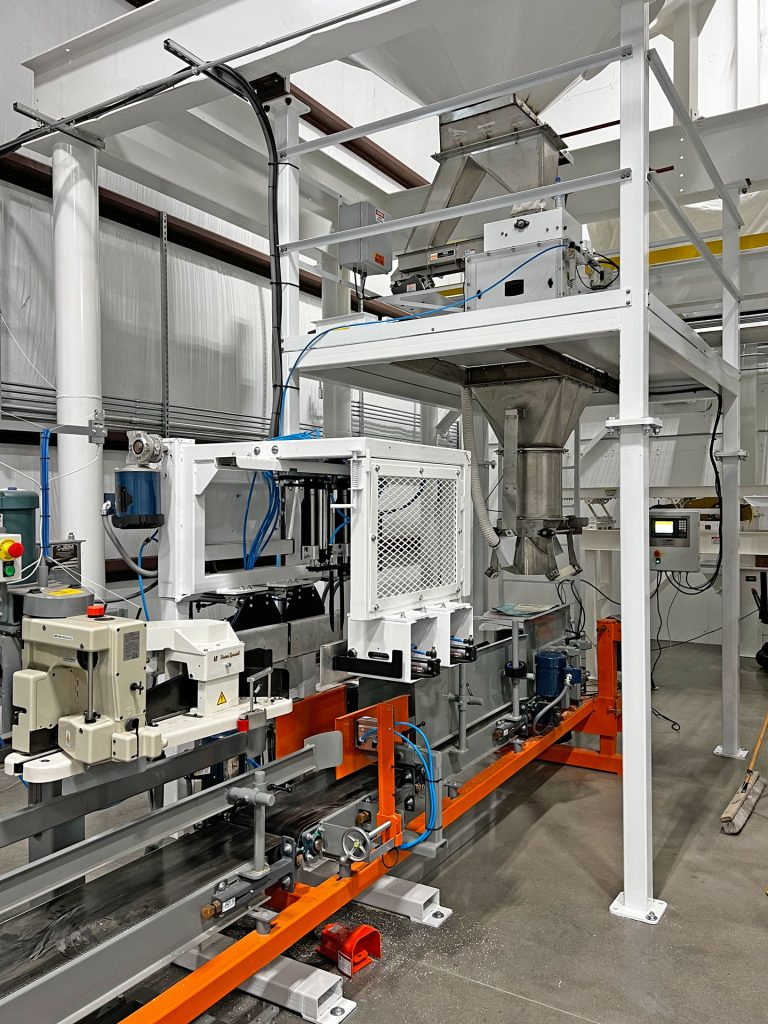
View of Bagging Machine and High-Speed Bag Closer in an Automated Packaging System
Rice producers face several challenges when it comes to bagging and packaging their product. Manual bagging processes can be time-consuming, labor-intensive, and prone to errors. To overcome these challenges, a USA-based rice producer sought an automated packaging system that could increase production efficiency, reduce labor costs, and improve bagging accuracy. In this case study, we’ll examine how the company successfully implemented the system, resulting in significant time and cost savings.
Equipment Used
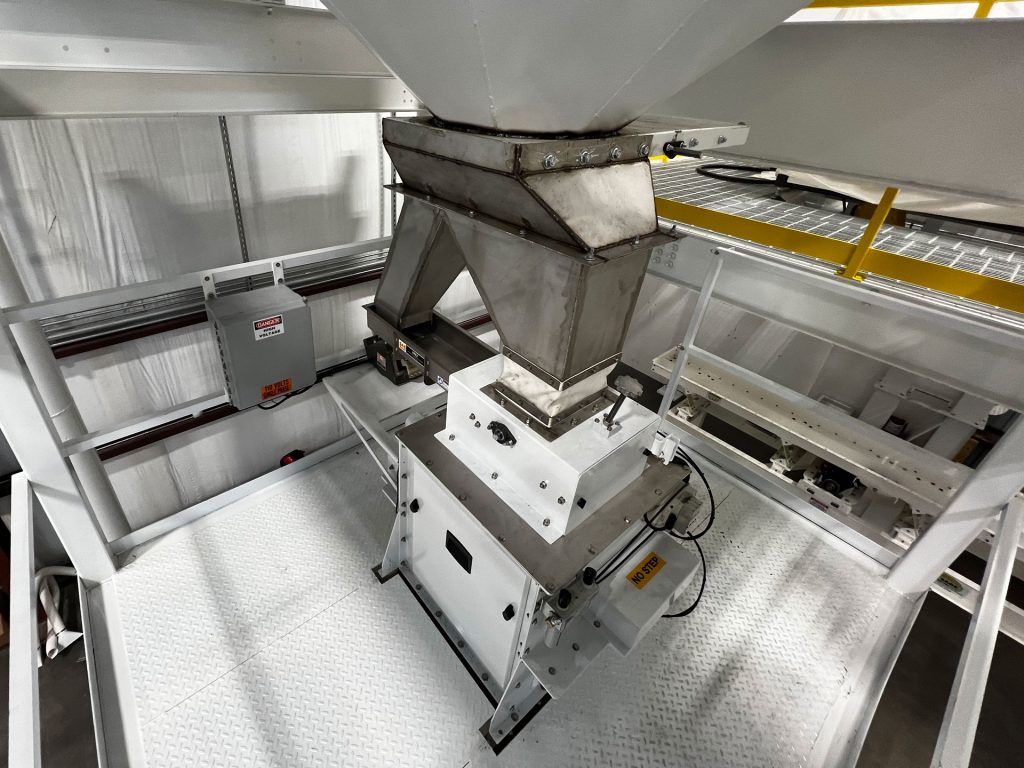
View from mezzanine of net weigh bagging scale support platform. Rice flows from a hopper into a “pants leg” diverter to a bulk flow gravity gate and dribble flow vibratory feeder, and then into the net weigher’s internal hopper.
The company opted for a customized automated packaging system to bag rice, which included several components, such as a scale support structure, bag filling equipment, sewing machines, conveyors, and robotic palletizing equipment. The system can produce up to 10 bags per minute on a continuous-run basis and pre-weigh the 50 lb. open top BOPP bags with an accuracy of plus/minus 6 ounces per bag. Packaging rates should increase when an automatic bag placer is added to the system in the future.
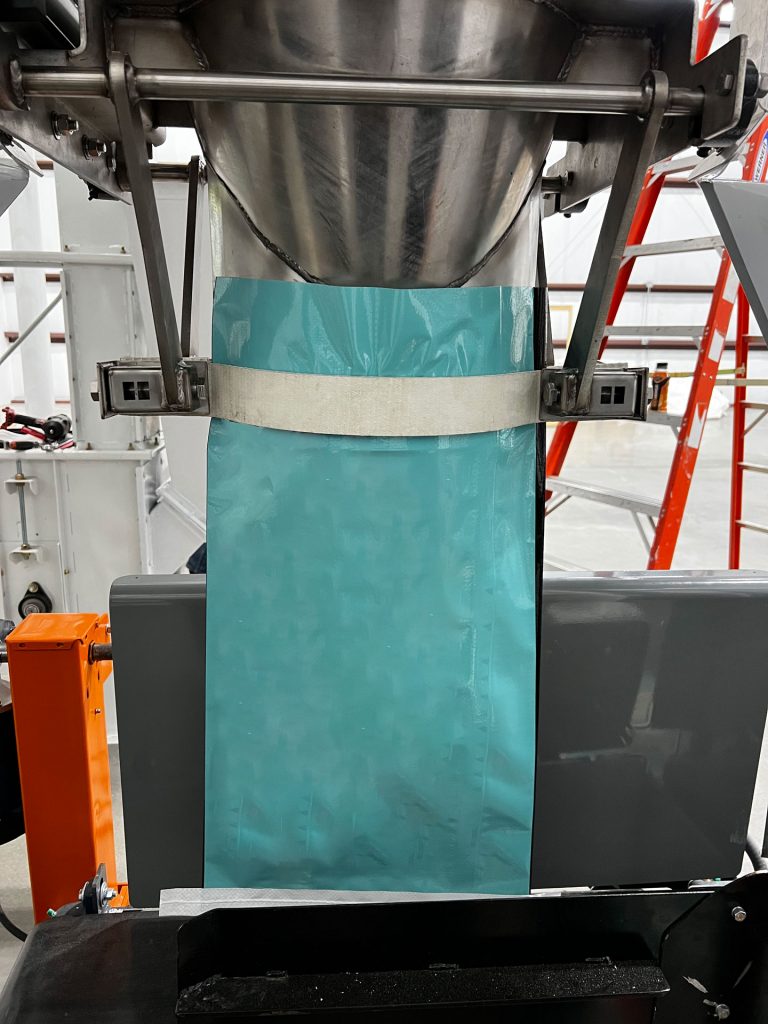
50 pound open top BOPP bag secured by a dust tight clamp
Process Description
An operator places empty bags on the open mouth bag filling machine. After filling the bags to a set target weight, the machine automatically drops the bags onto a conveyor, where an automatic bag top reformer guides the filled bags into the bag closing system.
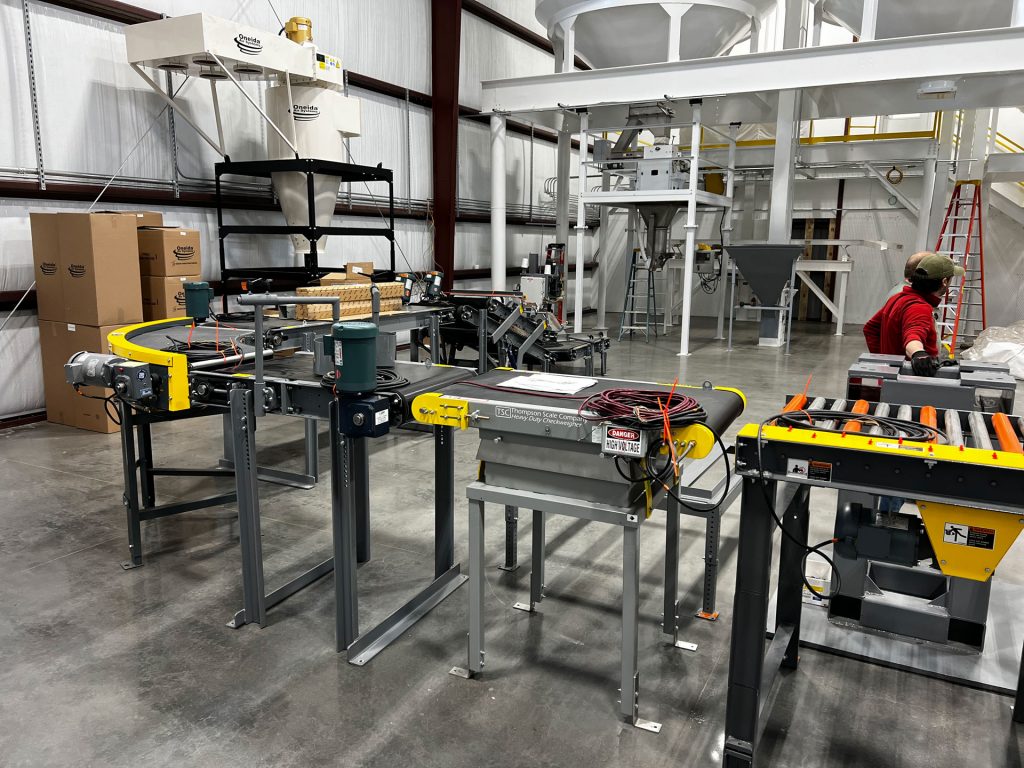
Layout of automated rice bagging equipment before final install
The bags then convey through a knockdown or bag turning conveyor, up an inclined bag flattener, across a 10-foot conveyor (to be replaced by a metal detector in the future), and then over a check weigher, and to a 4-foot long accumulation conveyor before being palletized by a reconditioned Fanuc robot.
The Fanuc robot stacks the filled bags on pallets in a side-by-side configuration. When a pallet is filled with stacked bags, an operator removes the full pallet from the robotic palletizing station using a forklift and replaces it with an empty pallet.
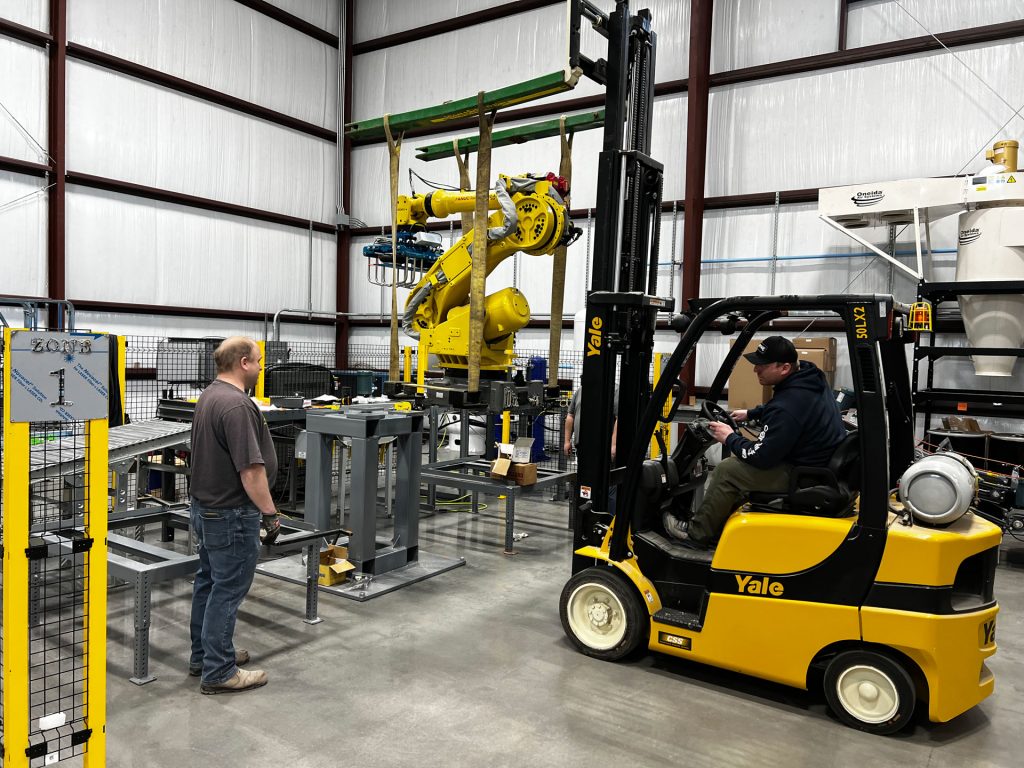
Lowering a Fanuc palletizing robot onto its base with stacking zones located on each side
Results
The automated packaging system has been installed and will become fully operational soon, streamlining the company’s bagging operations. The system’s pre-weighing capability will improve bagging accuracy, resulting in fewer errors and less product waste. The system’s high production capacity also allows the company to produce more bags in less time, increasing overall efficiency. In addition, the automated parts of the system reduce labor costs by eliminating the need for manual closing and palletizing processes. It is estimated that the new system could pay for itself within two years due to the increased efficiency and labor savings.
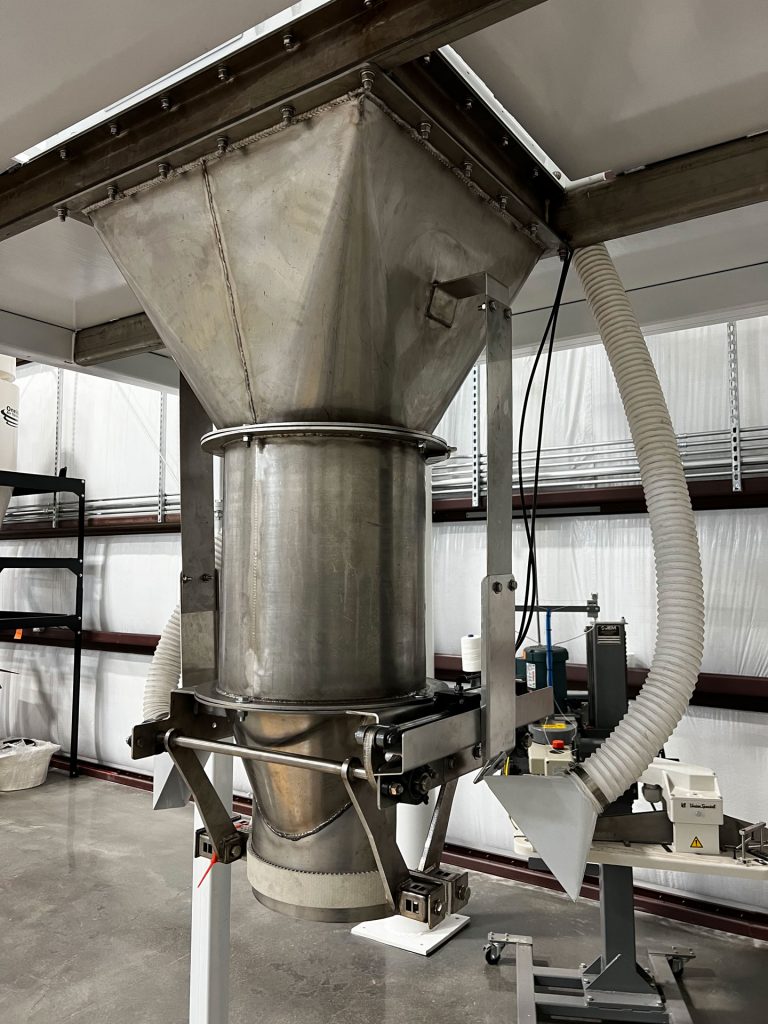
Discharge hopper with height adjustment cylinder, bag spout, and dust tight bag clamp. Cylinder will be removed in future when automatic bag placer is added.
Implementing an automated packaging system can provide significant benefits for many different types of producers, including feed producers, nut producers, corn producers, and more. By choosing the right components and customizing the system to meet specific needs, producers can enjoy these benefits and achieve a faster return on investment.
Ask a Question -or- Get a Price Quote!
Call: (979) 217-1480
